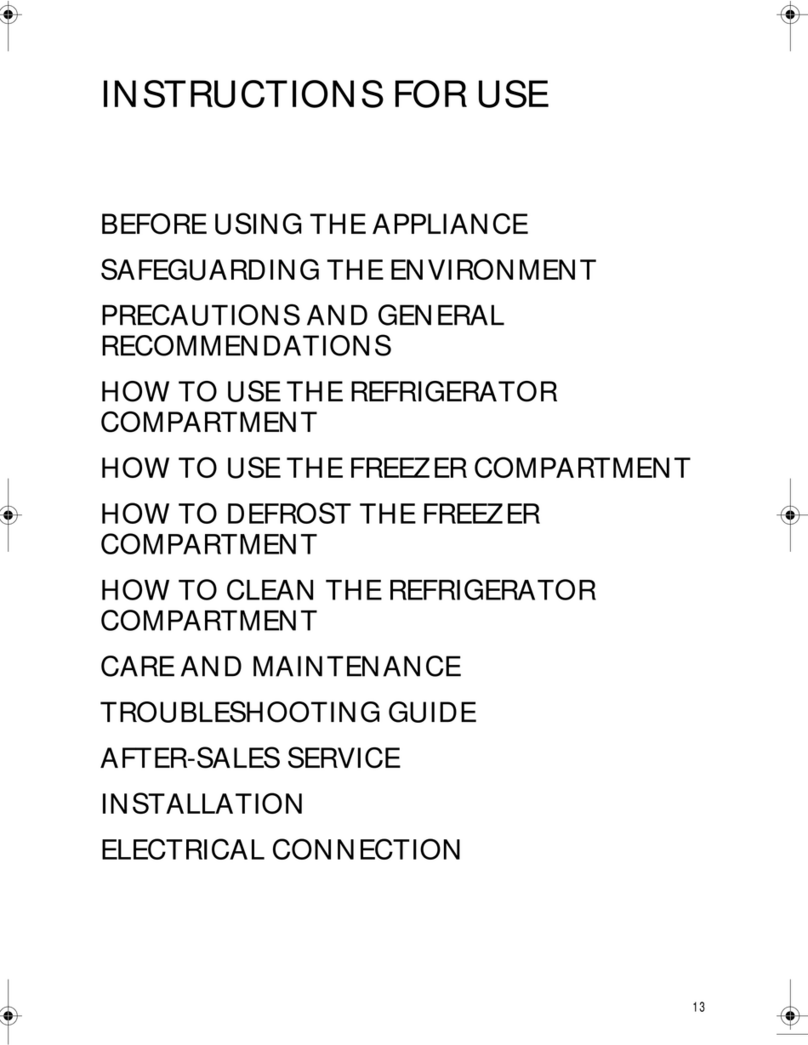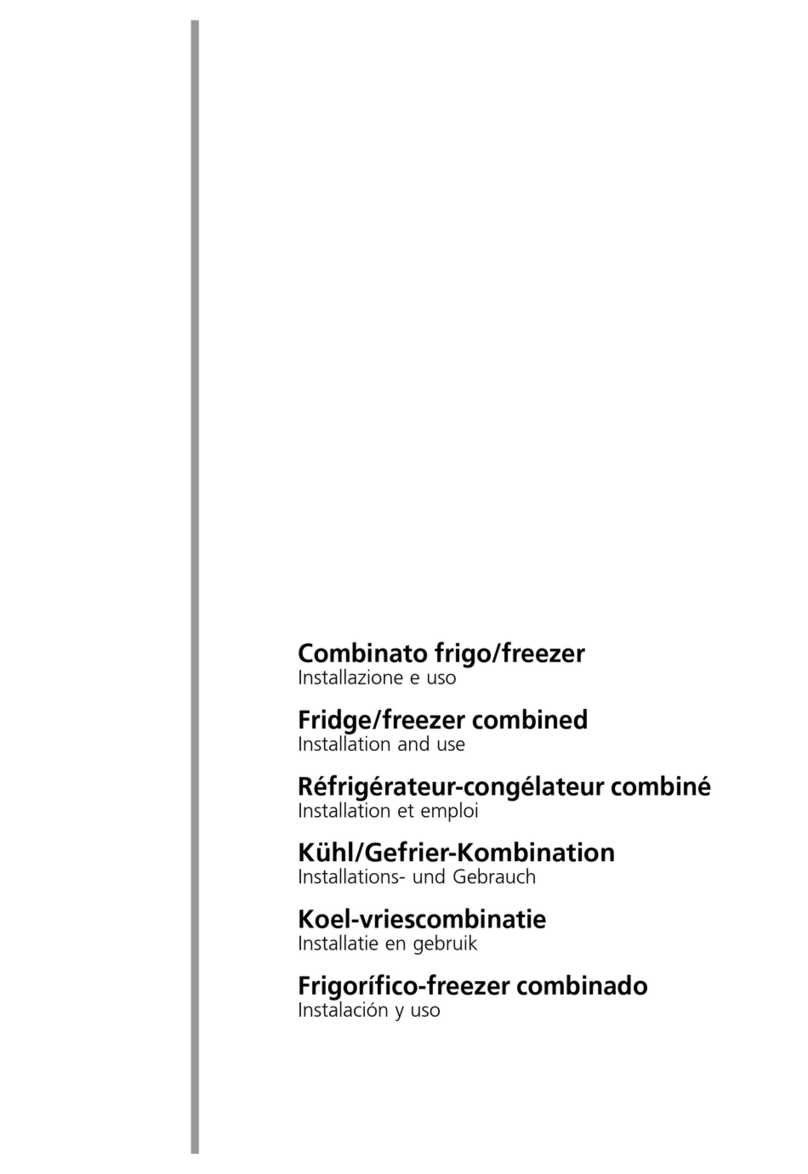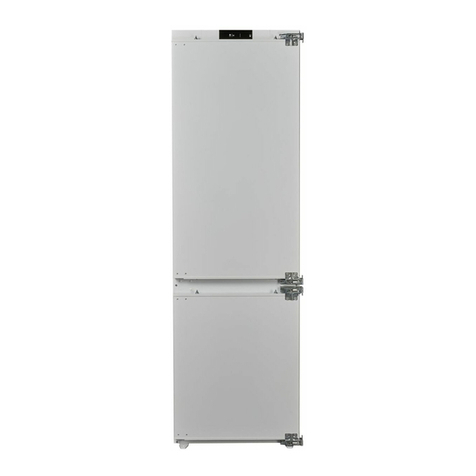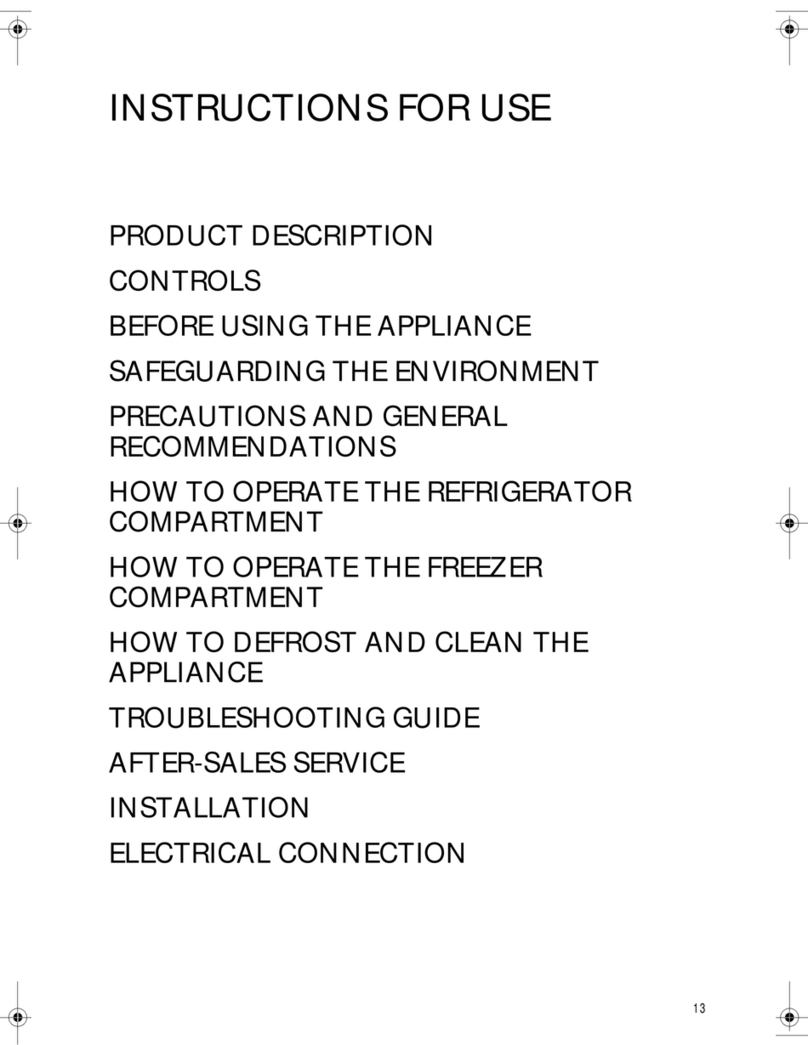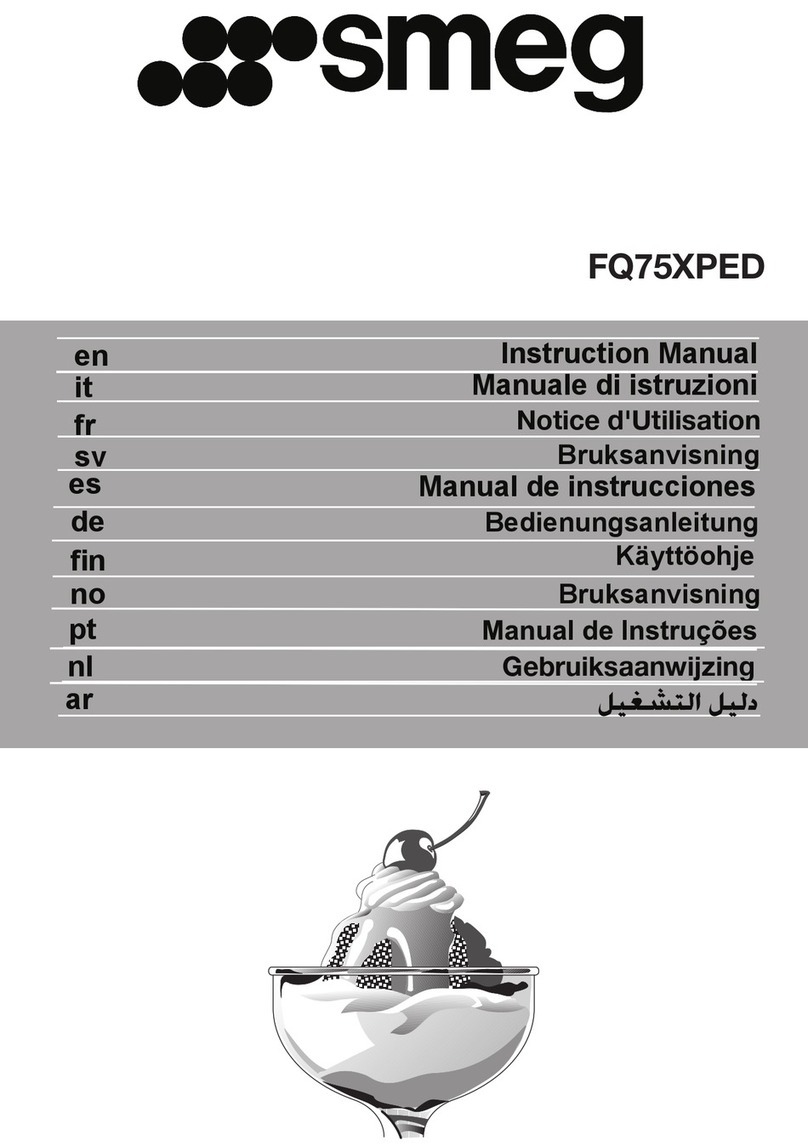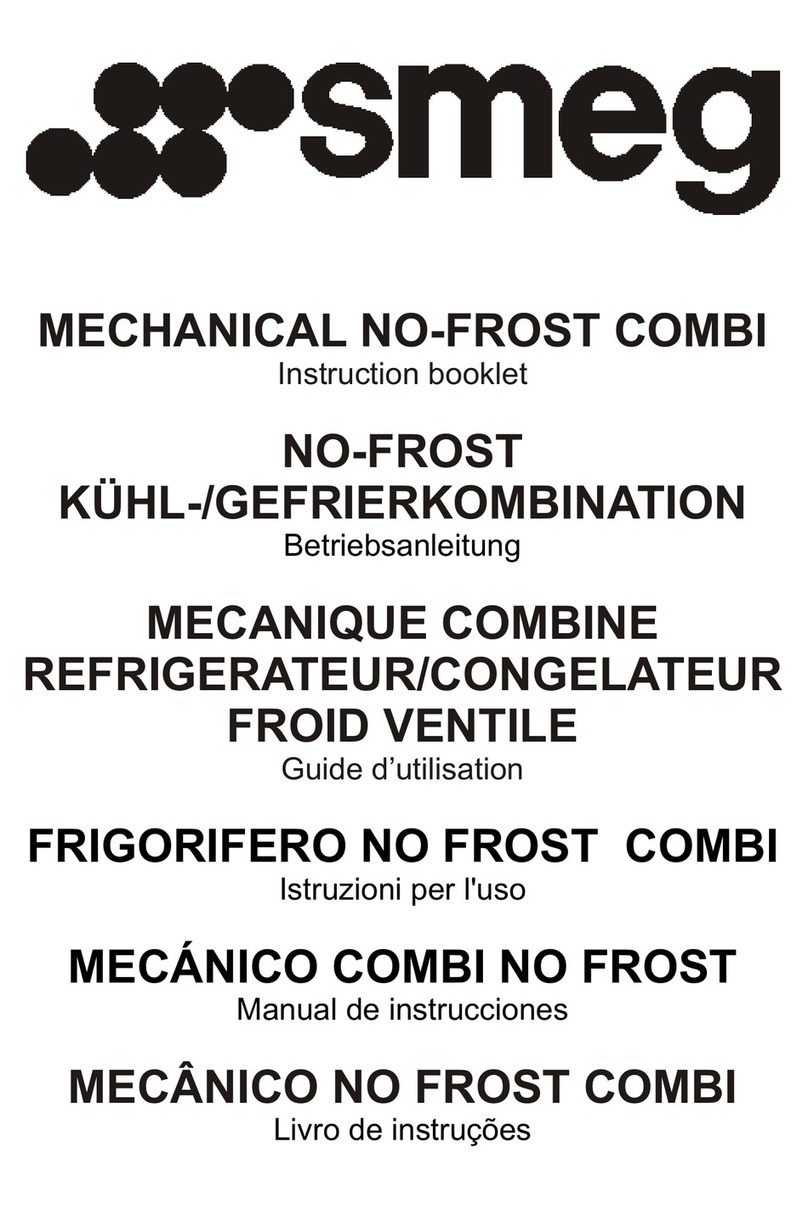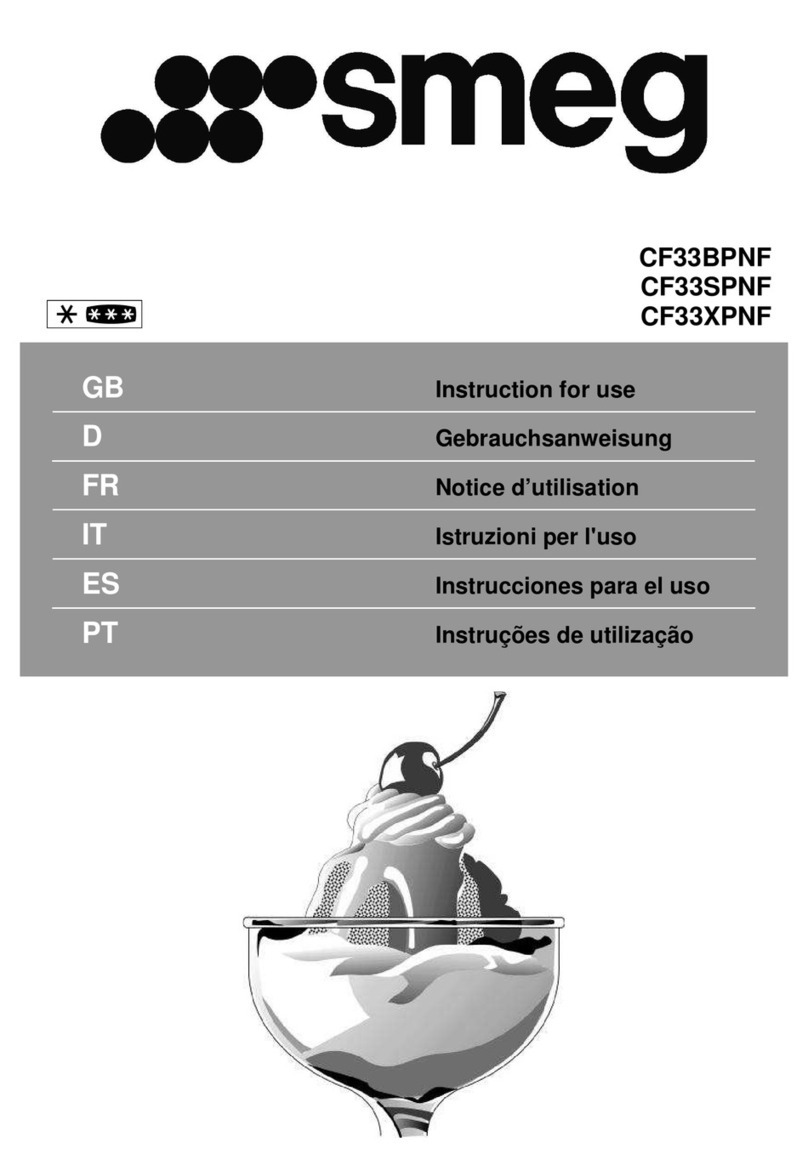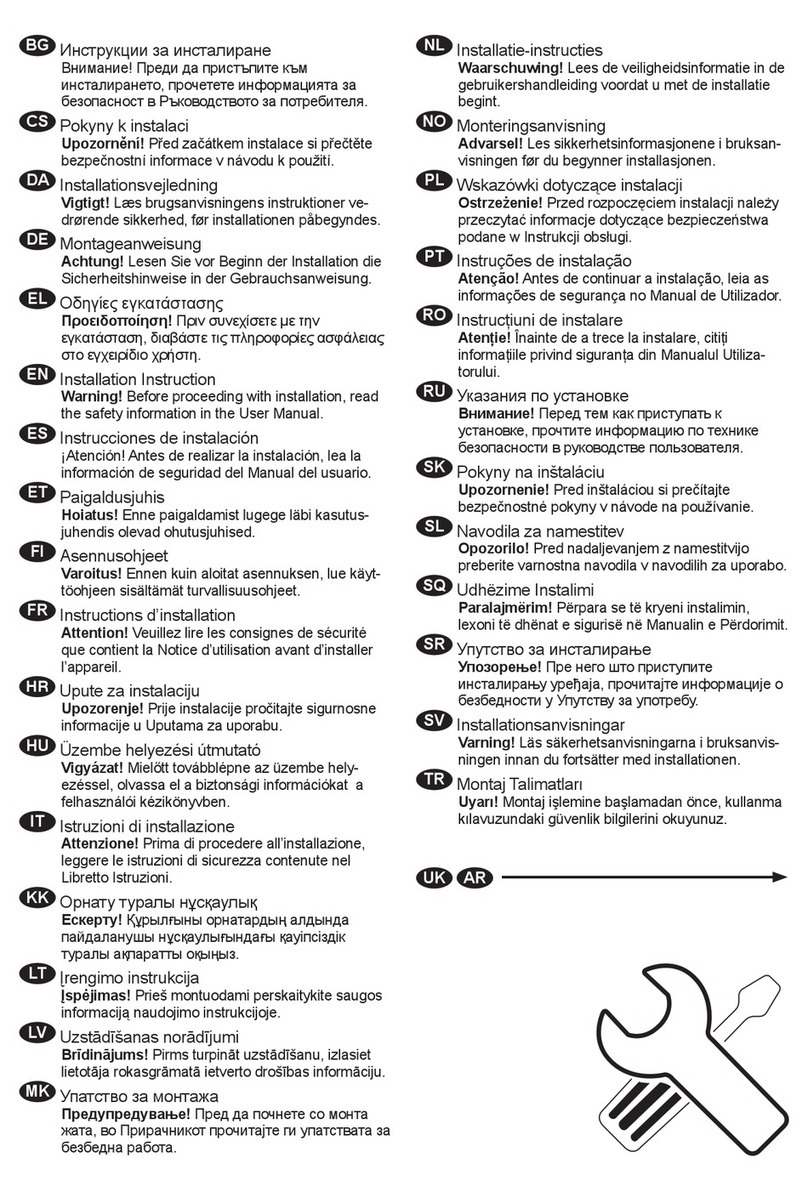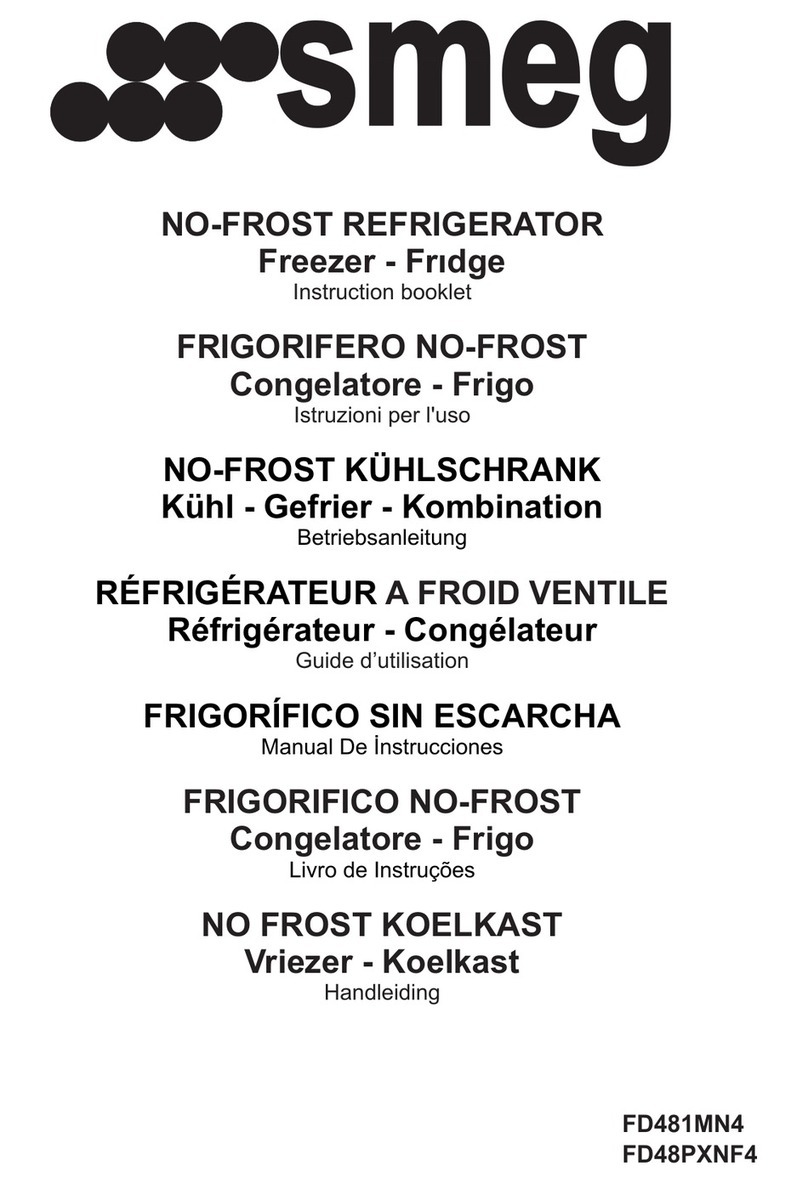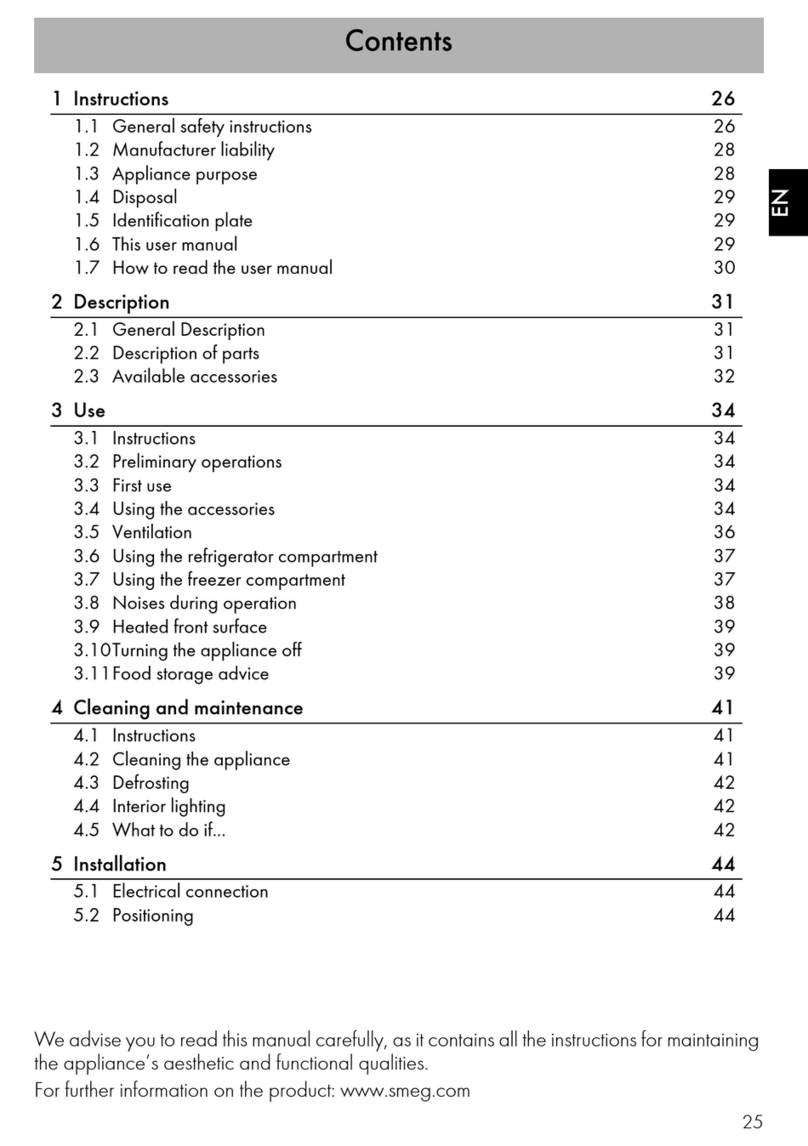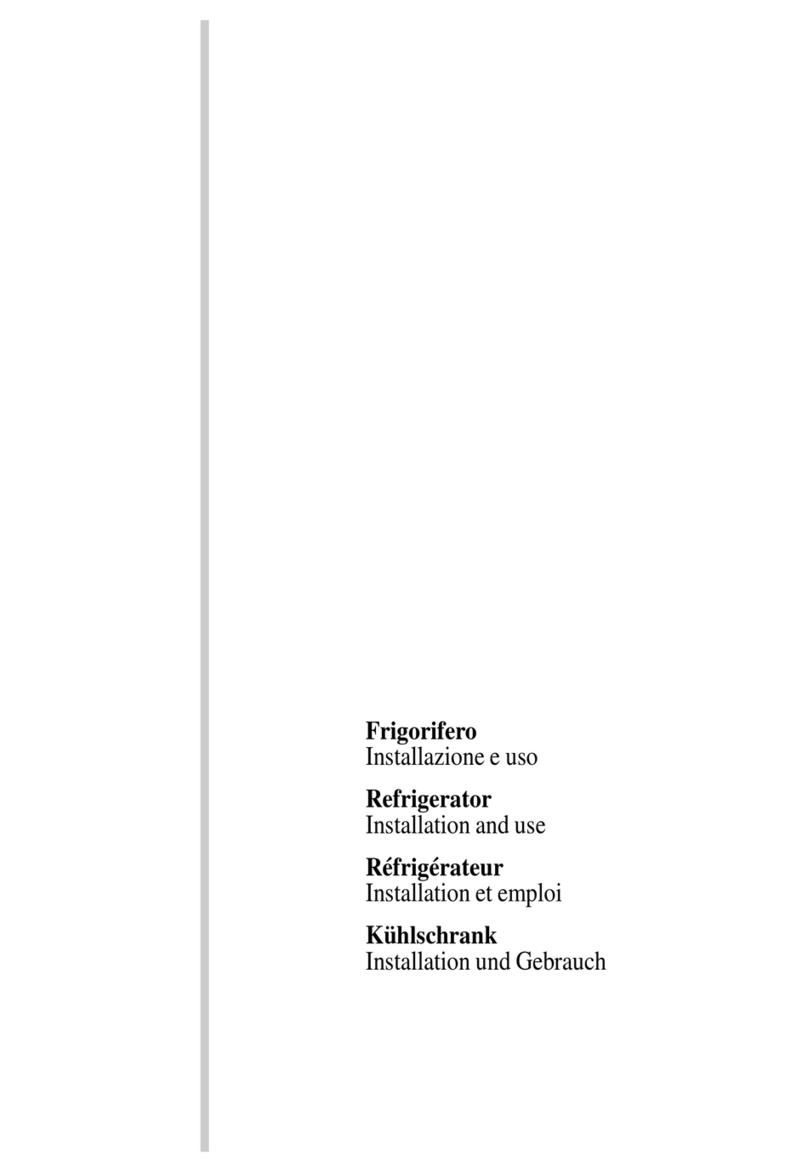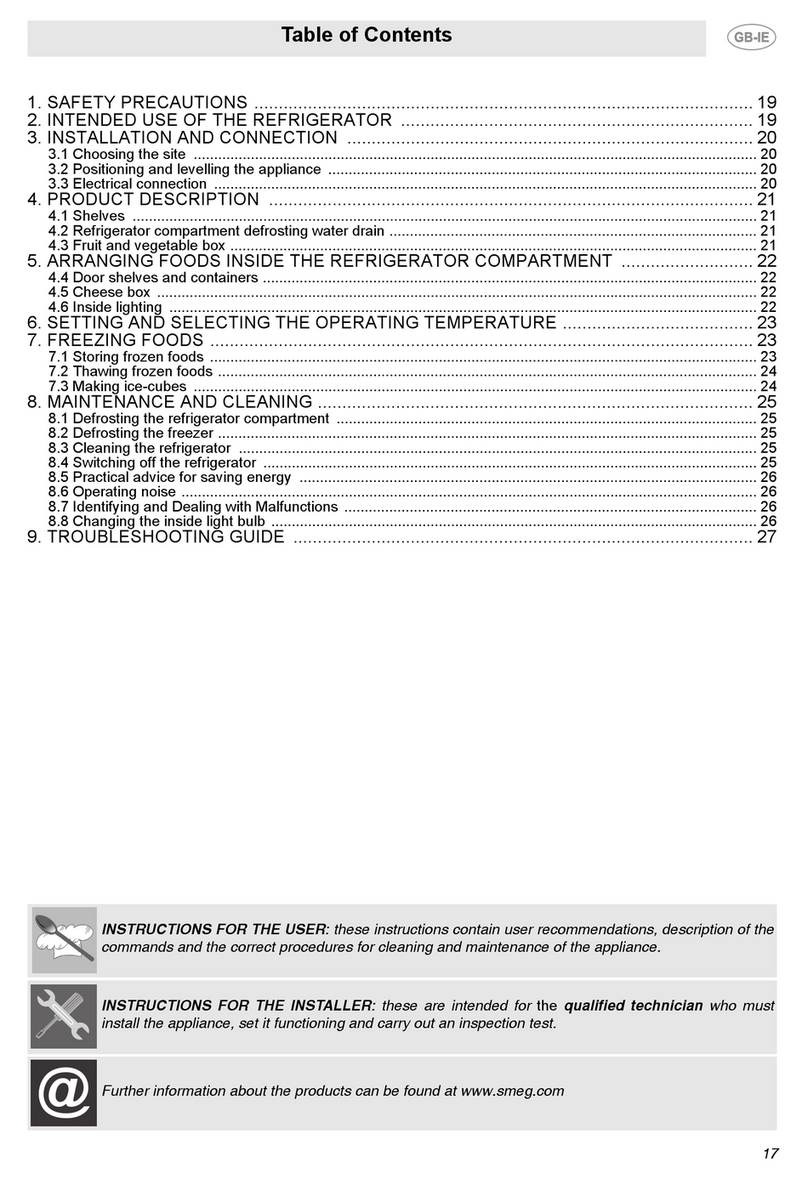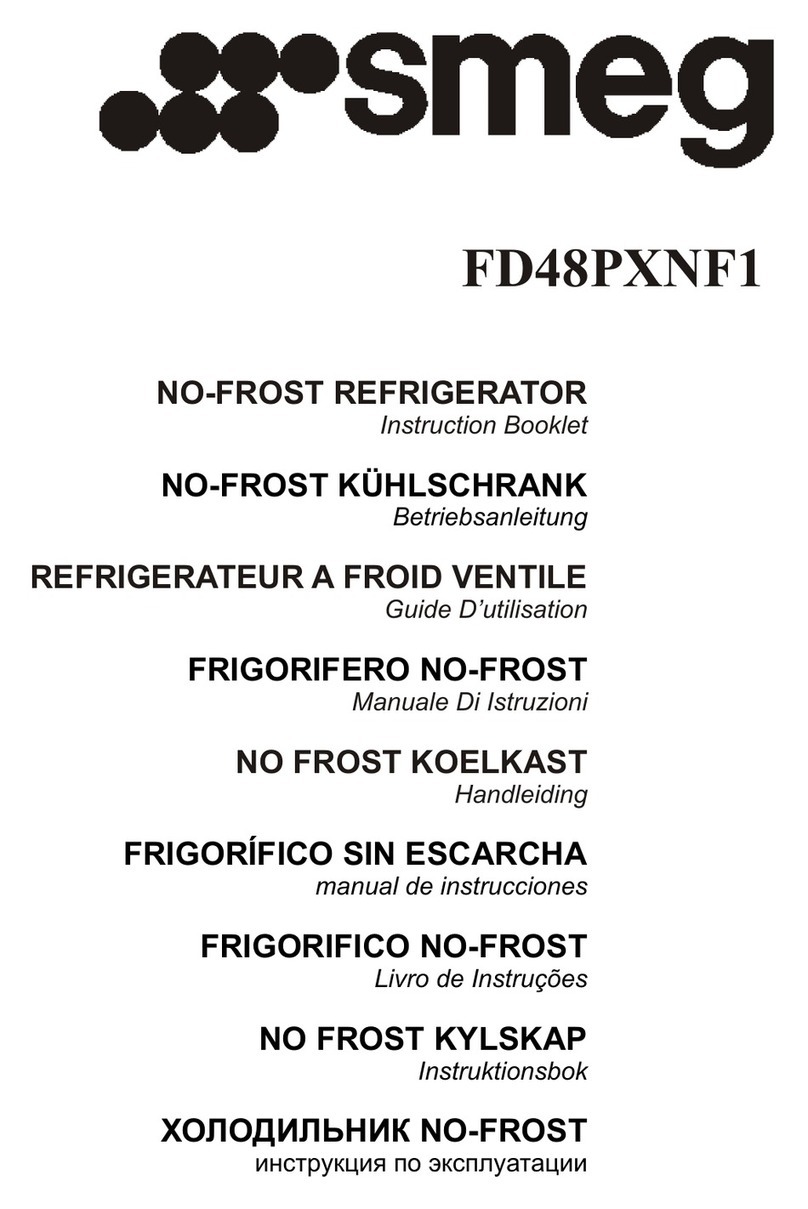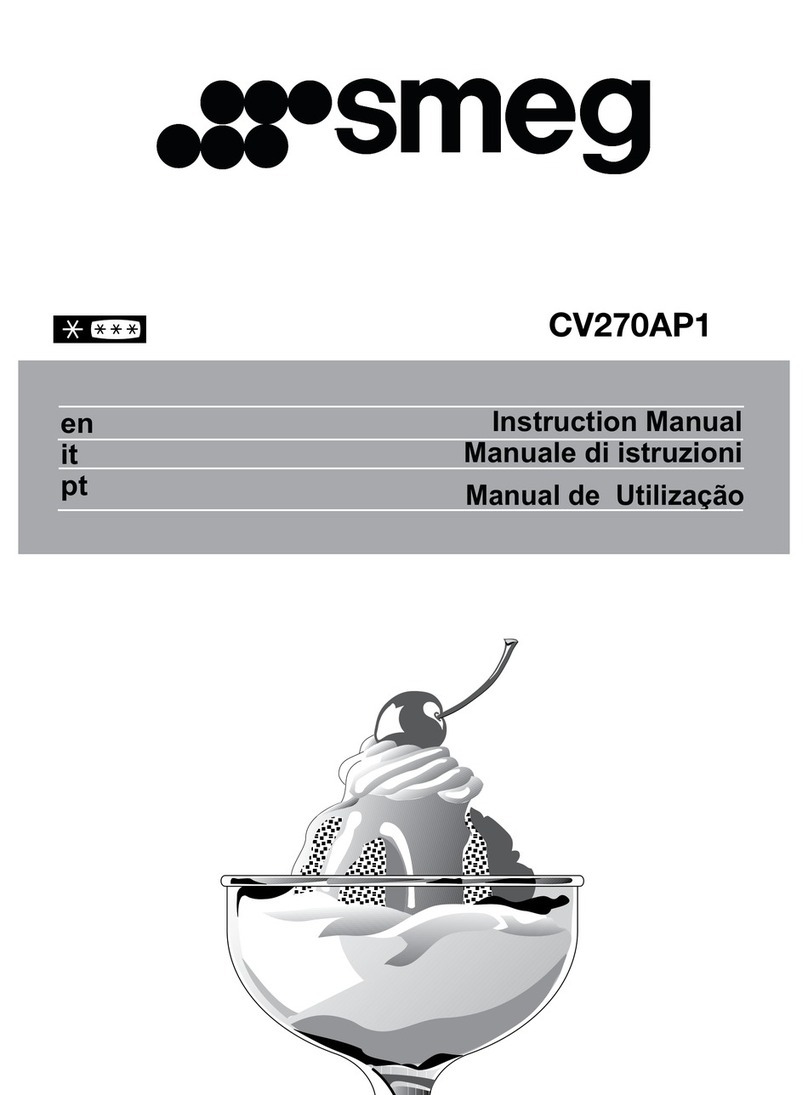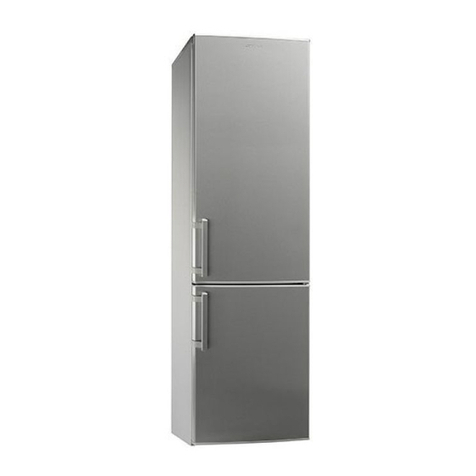Table of Contents
1. IMPORTANT SAFETY INSTRUCTIONS ................................................................................. 4
2. PROPER DISPOSAL OF YOUR REFRIGERATOR ................................................................ 5
3. INSTALLATION INSTRUCTIONS ........................................................................................... 6
3.1 Unpack the Refrigerator .................................................................................................................................. 6
3.2 Location requirements ..................................................................................................................................... 7
3.3 Positioning and levelling the appliance ........................................................................................................... 8
3.4 Electrical requirements .................................................................................................................................... 9
4. PRODUCT DESCRIPTION ................................................................................................... 10
4.1 Intended use of the refrigerator ..................................................................................................................... 10
4.2 Shelves ......................................................................................................................................................... 10
4.3 Bottle shelf .................................................................................................................................................... 10
4.4 Refrigerator compartment defrosting water drain .......................................................................................... 11
4.5 Fruit and vegetable box ................................................................................................................................. 11
4.6 Door shelves and containers ......................................................................................................................... 11
4.7 Inside lighting ................................................................................................................................................ 11
4.8 Operating noise ............................................................................................................................................. 11
5. REFRIGERATOR USE .......................................................................................................... 12
5.1 Using the controls ......................................................................................................................................... 12
5.2 Storing fresh food .......................................................................................................................................... 12
5.3 Freezing food ................................................................................................................................................ 13
5.4 Freezing compartment use ........................................................................................................................... 14
5.5 Thawing frozen foods .................................................................................................................................... 14
5.6 Making ice-cubes .......................................................................................................................................... 15
6. REFRIGERATOR CARE ....................................................................................................... 16
6.1 Defrosting the refrigerator ............................................................................................................................. 16
6.2 Defrosting the freezer .................................................................................................................................... 16
6.3 Cleaning the refrigerator ............................................................................................................................... 16
6.4 Changing the inside light bulb ....................................................................................................................... 17
6.5 Power interruptions ....................................................................................................................................... 17
6.6 Vacation and moving care ............................................................................................................................. 18
7. TROUBLESHOOTING ........................................................................................................... 19
INSTRUCTIONS FOR THE USER: these provide recommendations for use, a description of the controls
and the correct proCedures fo_cleaning and maintaining the appliance
INSTRUCTIONS FOR THE INSTALLER: these are intended for the qualified engineer who is able to
install, commission and test the appliance
3
